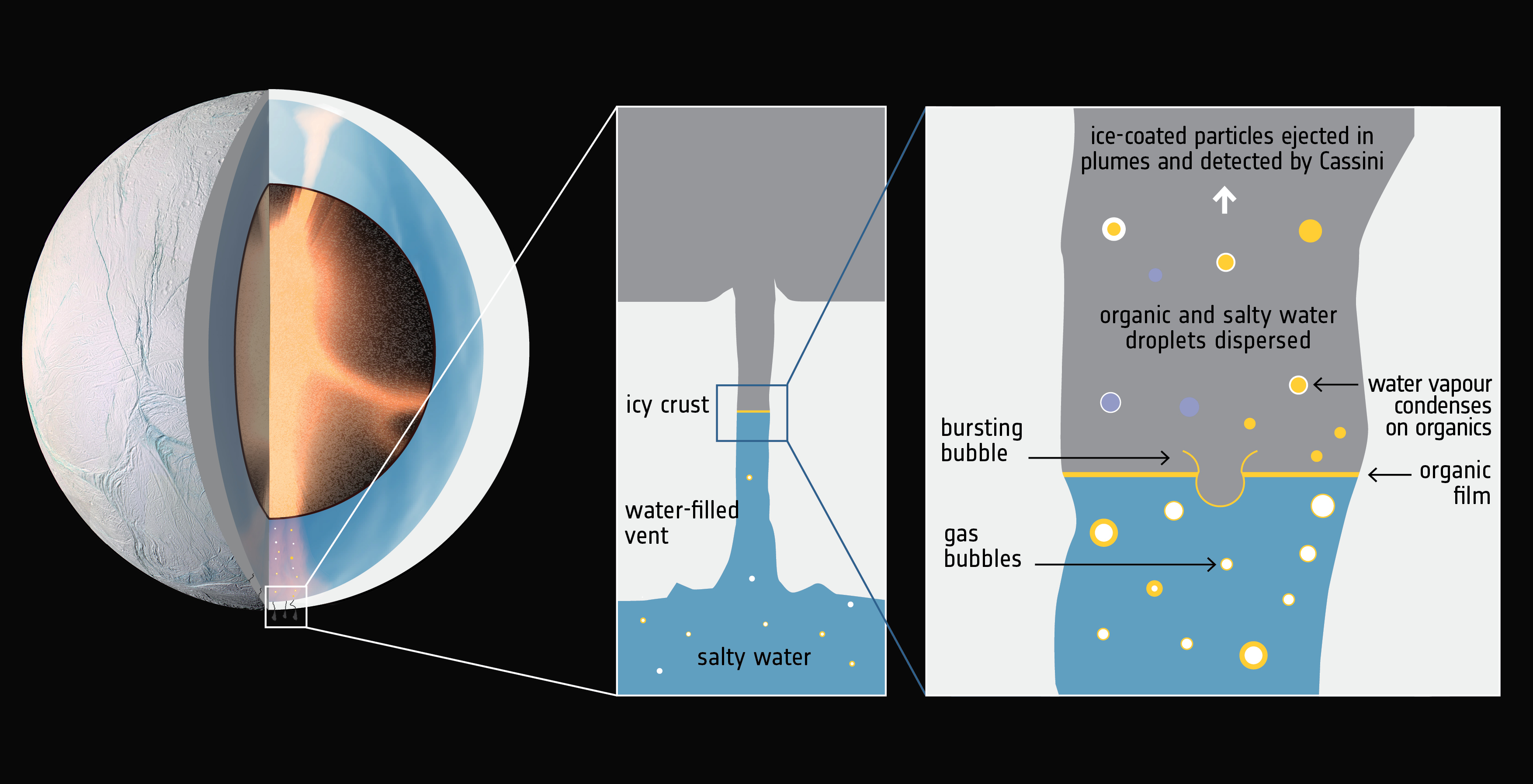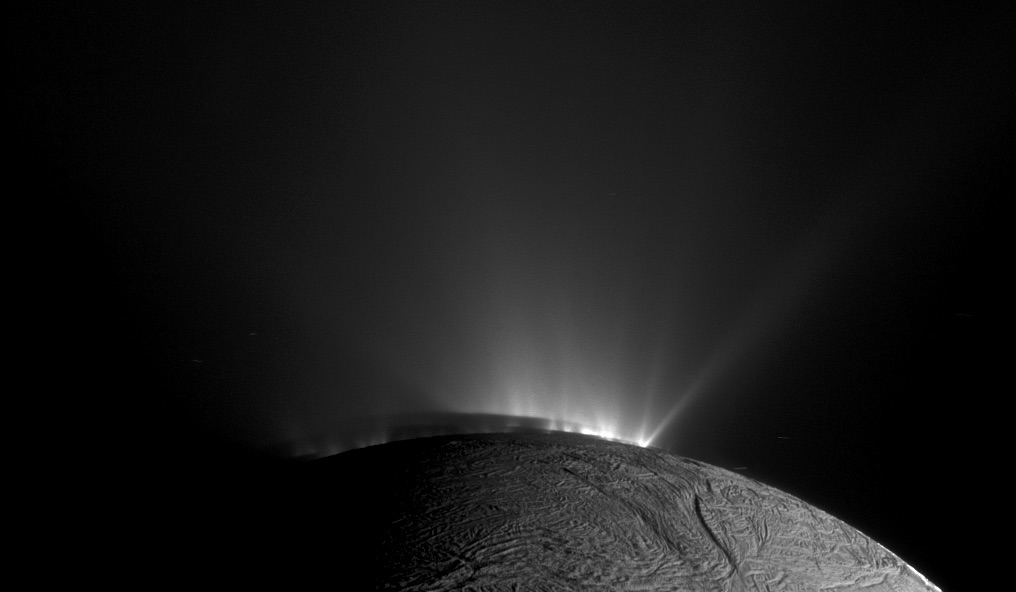Complex organic molecules from the depths of Enceladus
The Cassini probe that sent us the spectacular pictures of tiger stripes on Saturn’s moon Enceladus and that flew through the ice plumes there several times has long since crashed into Saturn. Nevertheless, scientists are still discovering more and more new details from the data that it sent. Now a research team led by Frank Postberg and Nozair Khawaja from the University of Heidelberg have succeeded in identifying fragments of complex organic molecules in the particles ejected from the ice geysers.
“This is the first-ever detection of complex organics coming from an extraterrestrial water world,” says Postberg. “we found large fragments that have typical structures for very large molecules,” adds Khawaja. “These complex molecules contain a network that often consists of hundreds of hydrogen, carbon, and nitrogen atoms that form ring-like and chain-like sub-structures.”
The fragments of up to 200 atomic mass units formed when the ice grains struck the Cassini’s dust analysis instruments at approximately 30,000 km/h. Before the collision, the scientists believe, they must have formed even larger molecules that weighed thousands of molecular masses. Previously only light molecules had been found in the data from Cassini. Such complex structures can only be formed by certain chemical processes – including those related to life. They could also originate from the early days of the Solar System or due to hydrothermal activity.
“I think they have a hydrothermal origin. At the high pressures and hot temperatures that we expect in the active core of Enceladus, such molecules could be produced,” says Postberg. The molecules produced in the core could then enter into the ocean under the ice by means of hydrothermal sources – similar to hydrothermal sources at the bottom of the ocean on Earth, which could then have led to the development of life.
In the Earth’s oceans, organic substances are brought to the surface by air bubbles. A similar process could also happen on Enceladus, where the organic molecules would form a thin layer just below the ice. Unfortunately, the Cassini data is not sufficient to definitively clear up this question. To do this will require another expedition to Enceladus. “If we could visit Enceladus again, we would take along instruments that study not only the fragments, but also the complete molecules and could tell us exactly where they come from and how they were produced,” says Postberg.

